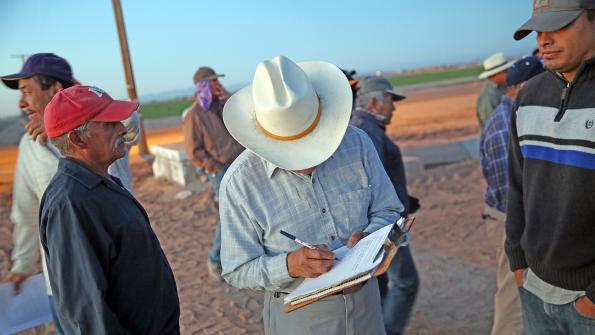
There are many constants in Mid-South agriculture. One of the most prevalent for producers in recent years is a difficulty in locating good, dependable labor.
Over many years, Chad Causey has seen the labor issue develop; first, as a staffer and eventual chief of staff to Arkansas Rep. Marion Berry. Now, Causey runs the Causey Law Firm out of Little Rock, where he and colleagues help growers navigate the many obstacles to bring in foreign labor.
In early November, Causey spoke with Delta Farm Press about the current ag labor landscape. Among his comments:
Have you seen an uptick in farm operations trying to bring labor into the Mid-South or South?
“From what I’ve seen, there has been an uptick in farms looking for seasonal labor. They’re bringing in labor from abroad (mostly) from the more traditional Central American countries. But there’s also been movement toward other labor pools, such as South Africa, to meet labor demand throughout the Mid-South.
“The demand on labor in farm country continues to grow. Farmers are doing what they must to ensure they have workers on the farm to get crops out.
IT’S FREE! Stay informed on what’s happening in Mid-South agriculture: Subscribe to Delta Farm Press Daily.
“Most of the workers enter through the H-2A program. They’re needed throughout the South crop production that requires intensive hands-on labor, such as with fruits and vegetables. In addition, the aquaculture and sugarcane industries also utilize seasonal worker programs to meet labor needs.
“Farmers have to get the crop out and must make a living. They look to hire locally but have to go where the labor is. Most of them would probably tell you it’d be cheaper if they could hire locally.”
On the application process…
“The application process for H-2A workers is time consuming and costly. You have to provide housing, fair wages, meet safety standards. It’s a long, arduous process to get through. If farmers could find local workers, it would be much easier and cost effective.
“Under H-2A there’s a local hiring requirement. Any employer wanting to hire foreign laborers must first try to hire workers locally. ‘Local’ is defined on a regional basis – so, the employer sometimes must look not only in their state but neighboring states.
“Typically, there’s very little response to local labor notices. There just aren’t a lot of folks applying for these jobs, want the jobs, or have the skill set and ability to do the jobs available. That’s why farmers are looking to go with the H-2A, and in some cases H-2B, immigrant labor programs.”
What are the hindrances with the H-2B program?
“Agriculture slots into the H-2A program. H-2B is for non-agricultural workers. Most H-2B labor is hired for the construction industry, food service and processing, landscaping and resorts.
“The primary challenge for employers seeking H-2B workers is the current statutory cap of 66,000 annually. There is much more demand than limits, making the process highly competitive. In addition, like the H-2A application process, apply for and receiving approval is cumbersome at best.”
Was the writing on the wall – did you foresee this situation -- when you were working on the Hill?
“Certainly when I was there in the 2000s, farm labor was already a challenge. It’s even more so now.
“There’s always been a confusion of the issues of illegal immigration – those entering the country outside the legal process – versus legal immigration. That fusing of the two issues has always been a challenger as it relates to securing reforms in the non-immigrant labor policies.
“The statutory caps in place on worker visas that can be granted was a challenge back then. I suspect those working on the Hill now find it to be as much of a challenge, if not more of one, today.
“The challenge policy makers have going into the future is how to separate those two issues and address them accordingly. Depending on who you talk to you’ll hear different strategies on how do that. Some say you need a comprehensive immigration bill where you’re dealing with all of it at once. Others say ‘no, we’ve got to address illegal immigration before looking at reforms to legal, non-immigrant labor issues.’”
On common questions and assumptions regarding foreign ag labor…
“Our law firm handles non-immigrant labor issues. The biggest challenge for employers is getting an application in order and making sure it goes through.
“What we’re seeing right now is the Department of Labor is overwhelmed with seasonal worker requests and applications. The employer seeking seasonal labor from overseas must make sure the applications are complete, done on time, entered on time, all i’s dotted and all t’s crossed. Any small mistake or omission can throw the timeline off.
“Until you get DOL approval on your package, you can’t begin to interview potential workers for hire. You can imagine the struggles that occur when an application is held up and a farmer has a crop approaching harvest.
“That’s where our firm helps shepherd through the visa applications, get things done in an expeditious manner so the farmer can get on with hiring their work force. I think the entire process keeps many farmers from pursuing the labor they need; they’re worried about the cumbersome application process.
“Also, some of the applications have been kicked back because DOL questions whether some types of ag production is, in fact, ‘seasonal.’ Those of us living in farm country understand the absurdity of that question.”
About the Author(s)
You May Also Like




